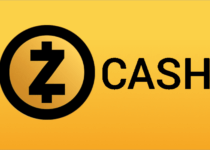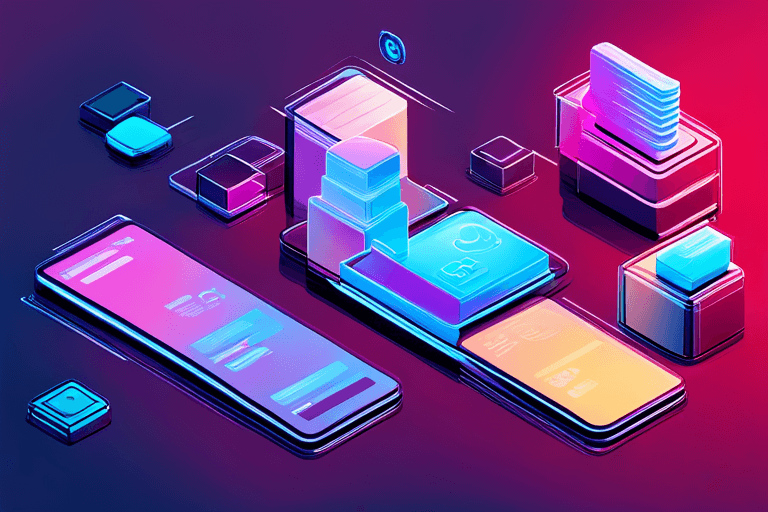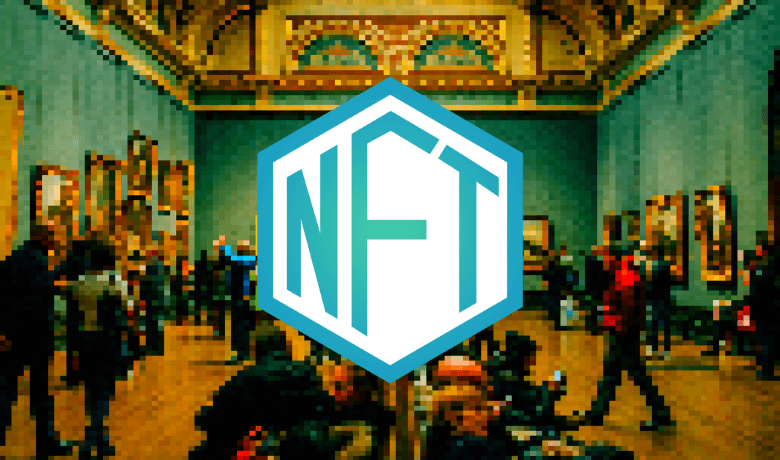NFTs in the Art World: Redefining Creativity, Ownership, and the Future of Expression
Introduction:
The intersection of art and technology has birthed a transformative phenomenon known as Non-Fungible Tokens (NFTs). In recent years, NFTs have disrupted the traditional art world, providing artists with new avenues for creation, exhibition, and monetization. This article explores the profound impact of NFTs on the art landscape, examining the evolution of digital art, the rise of blockchain technology, and the implications for artists, collectors, and the broader art community.
I. The Digital Renaissance:
- Emergence of Digital Art:
- The digital art movement has been gaining momentum for years, with artists exploring new mediums and expressions beyond traditional canvas and sculpture.
- The evolution of technology and the rise of digital tools have allowed artists to push the boundaries of creativity, blurring the lines between the physical and digital realms.
- NFTs as a Catalyst for Digital Art:
- NFTs have emerged as a game-changer for digital artists by providing a secure and transparent way to tokenize and authenticate their creations.
- The tokenization of digital art through NFTs addresses long-standing challenges related to provenance, ownership, and the scarcity of digital assets.
II. Tokenizing Creativity:
- Understanding NFTs in Art:
- Non-Fungible Tokens are unique digital assets that represent ownership or proof of authenticity for a specific piece of content, in this case, digital art.
- Each NFT is stored on a blockchain, ensuring transparency, security, and traceability throughout the lifespan of the artwork.
- Smart Contracts and Royalties:
- Smart contracts embedded in NFTs enable artists to receive a percentage of resale profits automatically, creating a sustainable revenue stream.
- This revolutionary feature challenges the traditional art market’s lack of residual income for artists when their works are resold.
III. The NFT Art Market:
- Exploding Market Growth:
- The NFT art market has witnessed exponential growth, with high-profile sales capturing headlines and drawing attention to the possibilities of digital ownership.
- From digital paintings and illustrations to GIFs and virtual reality experiences, the NFT art market embraces a wide spectrum of digital creations.
- Top NFT Art Platforms:
- Platforms like OpenSea, Rarible, and SuperRare have become hubs for artists and collectors, facilitating the creation, sale, and purchase of NFT art.
- The emergence of curated NFT marketplaces, such as Foundation, has added exclusivity and curation to the NFT art experience.
IV. NFTs and Traditional Art Institutions:
- Challenges and Opportunities:
- Traditional art institutions have been grappling with the integration of NFTs into their established frameworks.
- Challenges include issues of authentication, preservation, and the embrace of a technology-driven paradigm shift.
- NFTs in Museums and Galleries:
- Some museums and galleries have embraced NFTs as a means of democratizing access to art and exploring innovative exhibition formats.
- Digital art installations and NFT-backed exhibitions are challenging conventional notions of how art is displayed and experienced.
V. Empowering Artists and Redefining Ownership:
- Direct Artist-to-Collector Relationships:
- NFTs empower artists by establishing direct connections with collectors, eliminating intermediaries, and allowing creators to retain control over their work.
- This shift challenges the historical power dynamics within the art world, putting creators at the forefront of their careers.
- Inclusivity in the Art World:
- NFTs open the door for a more inclusive art world, providing opportunities for emerging and underrepresented artists to showcase their work and build a global audience.
- Accessibility to the global marketplace has the potential to redefine the canon of recognized and celebrated artists.
VI. Challenges and Controversies:
- Environmental Concerns:
- The energy consumption associated with certain blockchain technologies, particularly proof-of-work, has raised concerns about the environmental impact of NFTs.
- Ongoing efforts seek to address these concerns through the exploration of more sustainable consensus mechanisms.
- Copyright and Plagiarism Issues:
- NFTs have brought to the forefront questions about copyright, ownership, and the potential for unauthorized tokenization of digital content.
- Artists, platforms, and legal entities are working together to establish best practices and standards to address copyright-related challenges.
VII. The Role of NFTs in Shaping the Future of Art:
- Evolution of Digital Ownership:
- NFTs represent a paradigm shift in how we perceive and engage with digital ownership, extending beyond art to other digital assets, virtual real estate, and more.
- The concept of true ownership in the digital realm is reshaping the way society values and interacts with creative works.
- NFTs as Cultural Artifacts:
- NFTs have the potential to become cultural artifacts, reflecting the zeitgeist of our digital age and preserving a snapshot of artistic expression for future generations.
- The immutability of blockchain ensures that the provenance and history of each NFT-embedded artwork are preserved over time.
The rise of Non-Fungible Tokens (NFTs) has brought forth a multitude of advantages across various industries, from art and gaming to music and beyond. Here are some key advantages associated with the use of NFTs:
- Proven Ownership and Authenticity:
- NFTs leverage blockchain technology to provide indisputable proof of ownership and authenticity. This transparency is particularly valuable in the art world, where verifying the origin and ownership of a piece is crucial.
- Smart Contracts for Artist Royalties:
- Smart contracts embedded in NFTs enable automatic and transparent royalty payments to artists whenever their works are resold. This ensures a continuous revenue stream for creators, addressing a historical challenge in the traditional art market.
- Global Access and Inclusivity:
- NFTs facilitate global access to art and creative content. Artists can reach a diverse and international audience without the need for intermediaries, fostering inclusivity and democratizing the art world.
- Monetization for Digital Artists:
- Digital artists, who traditionally struggled to monetize their work, now have a direct avenue to showcase, sell, and profit from their creations through NFTs. This has empowered a new wave of creators in the digital space.
- Immutable Ownership Record:
- The blockchain’s immutability ensures a permanent and unalterable record of ownership and transaction history. This prevents fraudulent activities and provides a trustworthy ledger for both artists and collectors.
- Decentralization and Removing Intermediaries:
- NFTs operate on decentralized blockchain networks, reducing the reliance on intermediaries such as galleries, agents, or record labels. This allows artists to have more control over their careers and earnings.
- Tokenization Beyond Art:
- NFTs extend beyond art, allowing for the tokenization of various digital and physical assets, including virtual real estate, collectibles, music, videos, and more. This opens up new possibilities for ownership and investment.
- Innovations in Gaming and Virtual Realities:
- NFTs have transformed the gaming industry by enabling true ownership of in-game assets. Players can buy, sell, and trade assets both within and outside the gaming ecosystem, fostering a vibrant virtual economy.
- Cultural Preservation:
- NFTs serve as a means of preserving and cataloging cultural artifacts in the digital realm. The blockchain ensures that the provenance and history of each NFT-embedded artwork are stored permanently, contributing to cultural preservation.
- Direct Interaction with Collectors:
- NFTs enable direct connections between artists and collectors, eliminating the need for intermediaries. This fosters a more personal and direct relationship, allowing artists to engage with their audience and community.
- New Avenues for Digital Marketing:
- Brands and marketers are exploring NFTs as a novel way to engage audiences. NFTs can be used for limited edition releases, exclusive content drops, and interactive marketing campaigns, creating a unique and memorable experience for consumers.
- Diversification of Investment Portfolios:
- NFTs offer individuals the opportunity to diversify their investment portfolios beyond traditional assets like stocks and real estate. Collectibles and digital assets can become valuable components of a well-rounded investment strategy.
While the advantages of NFTs are significant, it’s essential to acknowledge that challenges and considerations, such as environmental concerns and copyright issues, also exist. As the technology continues to mature, addressing these challenges will be crucial for ensuring the sustained positive impact of NFTs across diverse sectors.
VIII. Conclusion:
In the ever-evolving canvas of the art world, Non-Fungible Tokens (NFTs) have emerged as brushstrokes that redefine the boundaries of creativity, ownership, and the trajectory of artistic expression. As we reflect on the profound impact of NFTs, it is evident that the digital renaissance they have ignited transcends traditional notions of art, challenging established paradigms and inviting a dynamic dialogue on the future of creativity.
The advent of NFTs has democratized access to the art world, dismantling barriers for emerging artists and fostering inclusivity on a global scale. Direct artist-to-collector relationships, powered by blockchain technology, have shifted the balance of power, allowing creators to navigate their own artistic journeys and directly engage with a diverse audience.
The NFT art market, with its explosive growth and high-profile sales, has not only brought digital art to the forefront but has also raised questions about the nature of ownership and the commodification of creativity. It challenges the art world to reconsider the value assigned to digital assets and to recognize them as cultural artifacts that mirror the pulse of our contemporary society.
However, this transformative journey is not without challenges. Environmental concerns associated with certain blockchain technologies and the need for sustainable solutions underscore the importance of responsible innovation. Copyright issues and questions of provenance call for a collaborative effort to establish standards and best practices that safeguard both artists and collectors.
Yet, in the midst of challenges, the potential for positive change is palpable. NFTs are not merely tokens; they represent a cultural shift towards embracing the digital age, preserving artistic legacies, and redefining how we interact with and value creative works. The immutability of blockchain ensures the preservation of the history and provenance of each NFT-embedded artwork, creating a lasting testament to the evolving nature of art in the digital realm.
As we stand at the nexus of tradition and innovation, NFTs beckon us to explore the uncharted territories of artistic expression. The future they portend is one where true ownership extends beyond physical confines, where artists navigate a decentralized landscape, and where the boundaries of the art world expand to include a global audience.
In conclusion, NFTs signify more than a technological novelty; they embody a cultural shift, a renaissance for the digital age. They invite us to question, to reimagine, and to actively participate in shaping the narrative of art. As we traverse this transformative landscape, embracing the possibilities that NFTs unfold, we embark on a journey where the canvas of creativity knows no limits, where ownership is democratized, and where the future of art is a collaborative masterpiece painted by artists and enthusiasts alike.
Related Posts

Meme Ai: Where Cryptocurrency Meets Meme Culture

Zcash: A Deep Dive into the Privacy-Focused Cryptocurrency









